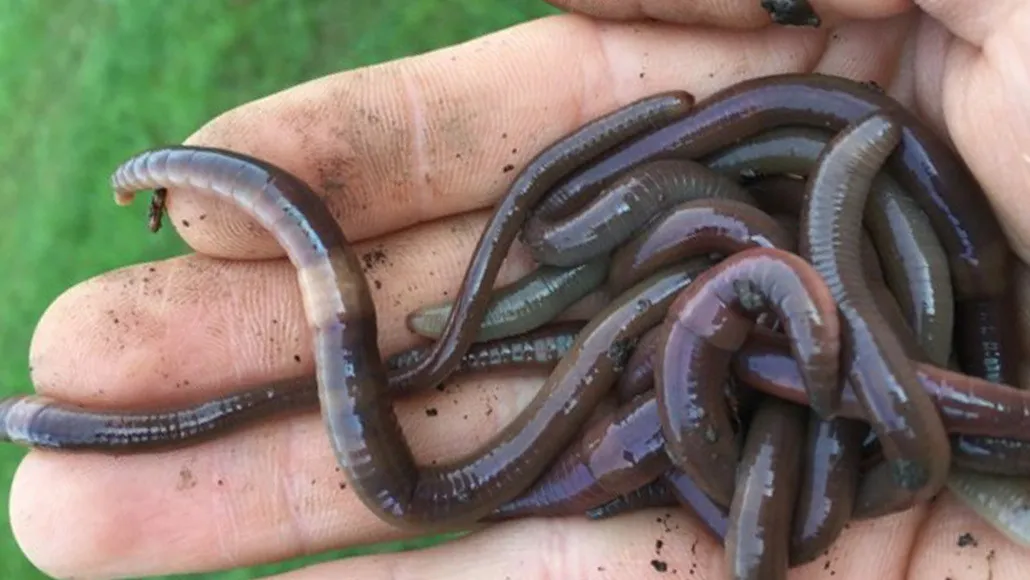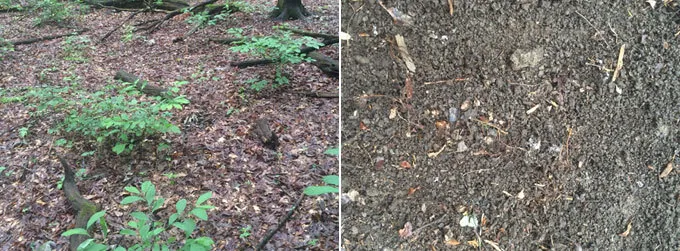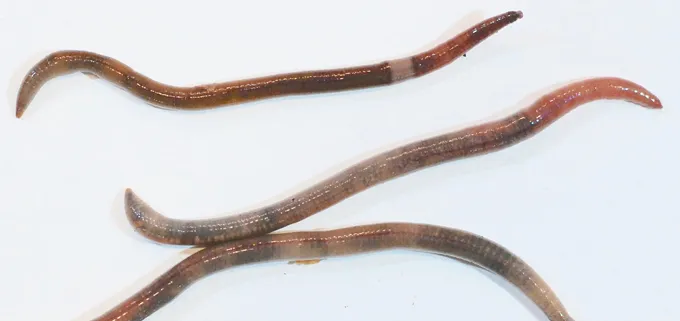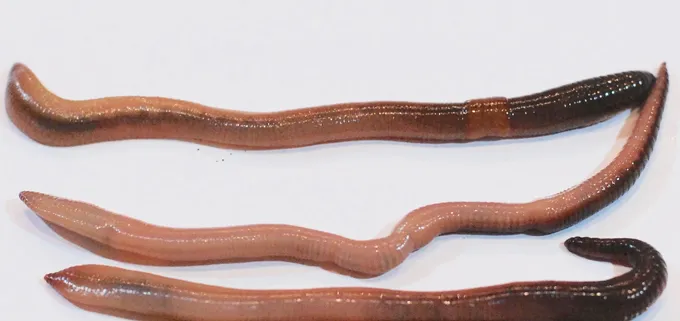Invasive jumping worms damage U.S. soil and threaten forests
The writhing wrigglers devour leaf litter, changing soils and ecosystems as they go

Brad Herrick of the University of Wisconsin–Madison Arboretum holds a handful of invasive Asian jumping worms. Two of the three invasive worm species spreading across the United States have been found in Wisconsin: Amynthas agrestis and A. tokioensis.
UW–Madison Arboretum
By Megan Sever
- More than 2 years ago
Read another version of this article at Science News Explores
What could be more 2020 than an ongoing invasion of jumping worms?
These earthworms are wriggling their way across the United States, voraciously devouring protective forest leaf litter and leaving behind bare, denuded soil. They displace other earthworms, centipedes, salamanders and ground-nesting birds, and disrupt forest food chains. They can invade more than five hectares in a single year, changing soil chemistry and microbial communities as they go, new research shows. And they don’t even need mates to reproduce.
Endemic to Japan and the Korean Peninsula, three invasive species of these worms — Amynthas agrestis, A. tokioensis and Metaphire hilgendorfi — have been in the United States for over a century. But just in the past 15 years, they’ve begun to spread widely (SNS: 10/7/16). Collectively known as Asian jumping worms, crazy worms, snake worms or Alabama jumpers, they’ve become well established across the South and Mid-Atlantic and have reached parts of the Northeast, Upper Midwest and West.
Jumping worms are often sold as compost worms or fishing bait. And that, says soil ecologist Nick Henshue of the University at Buffalo in New York, is partially how they’re spreading (SN: 11/5/17). Fishers like them because the worms wriggle and thrash like angry snakes, which lures fish, says Henshue. They’re also marketed as compost worms because they gobble up food scraps far faster than other earthworms, such as nightcrawlers and other Lumbricus species.
But when it comes to ecology, the worms have more worrisome traits. Their egg cases, or cocoons, are so small that they can easily hitch a ride on a hiker’s or gardener’s shoe, or can be transported in mulch, compost or shared plants. Hundreds can exist within a square meter of ground.
Compared with Lumbricus worms, jumping worms grow faster and reproduce faster — and without a mate, so one worm can create a whole invasion. Jumping worms also consume more nutrients than other earthworms, turning soil into dry granular pellets that resemble coffee grounds or ground beef — Henshue calls it “taco meat.” This can make the soil inhospitable to native plants and tree seedlings and far more likely to erode.
To date, scientists have worried most about the worms’ effects on ground cover. Prior to a jumping worm invasion, the soft layer of decomposing leaves, bark and sticks covering the forest floor might be more than a dozen centimeters thick. What’s left afterward is bare soil with a different structure and mineral content, says Sam Chan, an invasive species specialist with Oregon Sea Grant at Oregon State University in Corvallis. Worms can reduce leaf litter by 95 percent in a single season, he says.
That in turn can reduce or remove the forest understory, providing less nutrients or protection for the creatures that live there or for seedlings to grow. Eventually, different plants come in, usually invasive, nonnative species, says Bradley Herrick, an ecologist and research program manager at the University of Wisconsin–Madison Arboretum. And now, new research shows the worms are also changing the soil chemistry and the fungi, bacteria and microbes that live in the soils.

In a study in the October Soil Biology and Biochemistry, Herrick, soil scientist Gabriel Price-Christenson and colleagues tested samples from soils impacted by jumping worms. They were looking for changes in carbon and nitrogen levels and in soils’ release of carbon dioxide, which is produced by the metabolism of microbes and animals living in the soil. Results showed that the longer the worms had lived in the soils, the more the soils’ basal metabolic rate increased — meaning soils invaded by jumping worms could release more carbon dioxide into the atmosphere, says Price-Christenson, who is at the University of Illinois at Urbana-Champaign.
Relative amounts of carbon and nitrogen in soils with jumping worms also shifted, the team found. That can affect plant communities, Herrick says. For example, although nitrogen is a necessary nutrient, if there’s too much, or it’s available at the wrong time of year, plants or other soil organisms won’t be able to use it.
The team also extracted DNA from worm poop and guts to examine differences in microbes among the jumping worm species, and tested the soils for bacterial and fungal changes. Each jumping worm species harbors a different collection of microbes in its gut, the results showed. That’s “a really important find,” Herrick says, “because for a long time, we were talking about jumping worms as a large group … but now we’re learning that [these different species] have different impacts on the soil, which will likely cascade down to having different effects on other worms, soil biota, pH and chemistry.”
The finding suggests each species might have a unique niche in the environment, with gut microbes breaking down particular food sources. This allows multiple species to invade and thrive together, Herrick says. This makes sense, given findings of multiple species together, but it’s still a surprise that such similar worms would have different niches, he says.
Scientists have been working hard to get a good handle on the biology of these worms, Henshue says. So the newly discovered soil chemistry and microbiology changes are “thoughtful” and important lines of research. But there’s still a lot that’s unknown, making it hard to predict how much farther the worms might spread and into what kinds of environments. One important question is how weather conditions affect the worms. For example, a prolonged drought this year in Wisconsin seems to have killed off many of the worms, Herrick says. Soils teeming with wriggling worms just a few weeks ago now hold far fewer.
Perhaps that’s a hopeful sign that even these hardy worms have their limits, but in the meantime, the onslaught of worms continues its march — with help from the humans who spread them.
How to tell jumping worms from regular earthworms
Earthworms all look alike, right? Well no. From their bodies to how they move to their poop, here’s how to tell the difference between invasive jumping worms and a common species, European nightcrawlers, at a glance.
Jumping worms
(Amnythas spp.)

Color: Smooth, glossy dark gray to brown
Length: 10–13 centimeters
Clitellum (or ring): White and circles whole body
Movement: Serpentine thrashing
Castings: Granular soil, looks like coffee grounds
European nightcrawlers
(Lumbricus sp.)

Color: Slimy pinkish or nude
Length: 15–20 centimeters
Clitellum (or ring): Pink and partially circles body
Movement: Slowly wriggle and stretch
Castings: Neat piles in normal-looking soil







